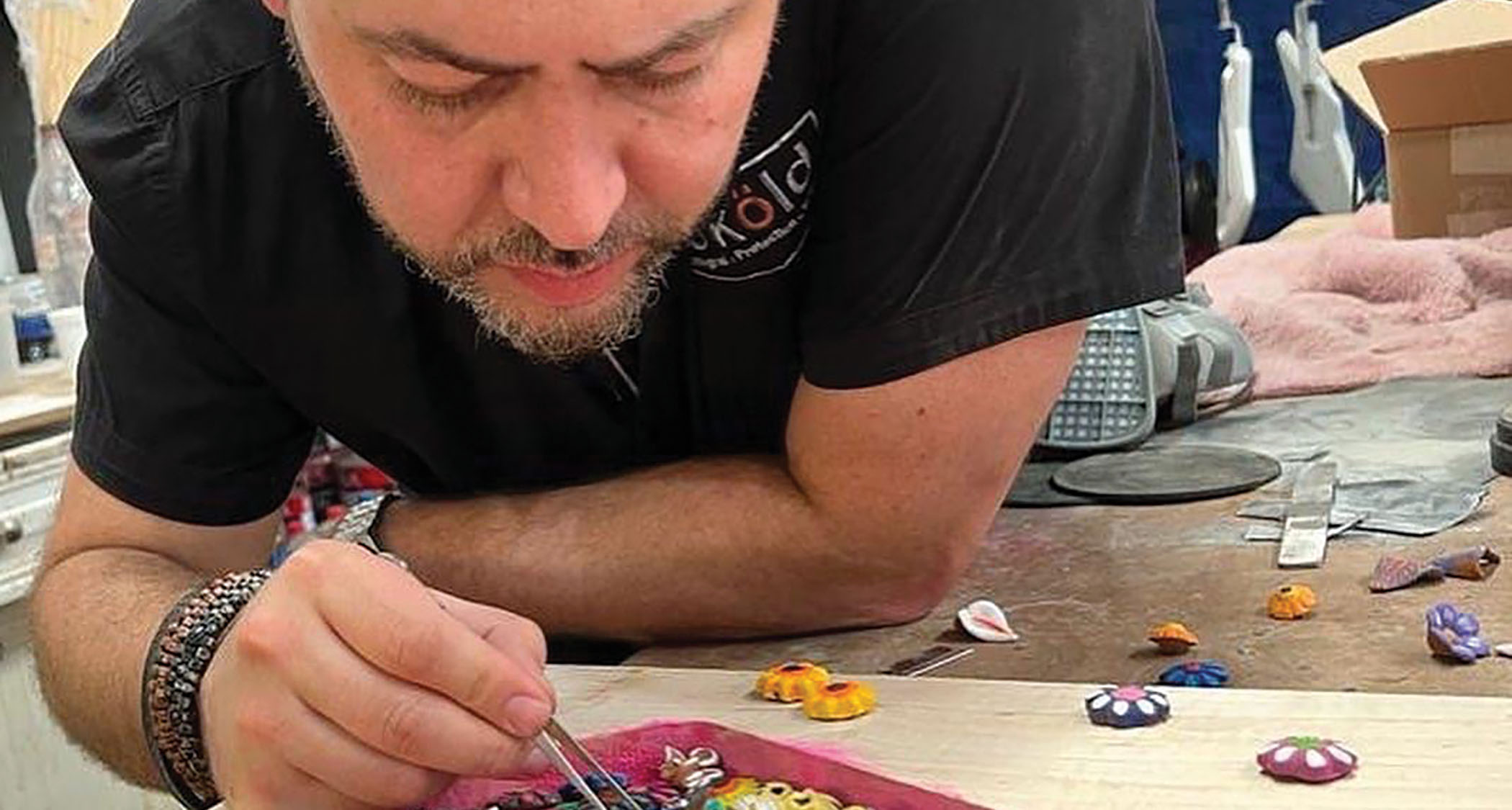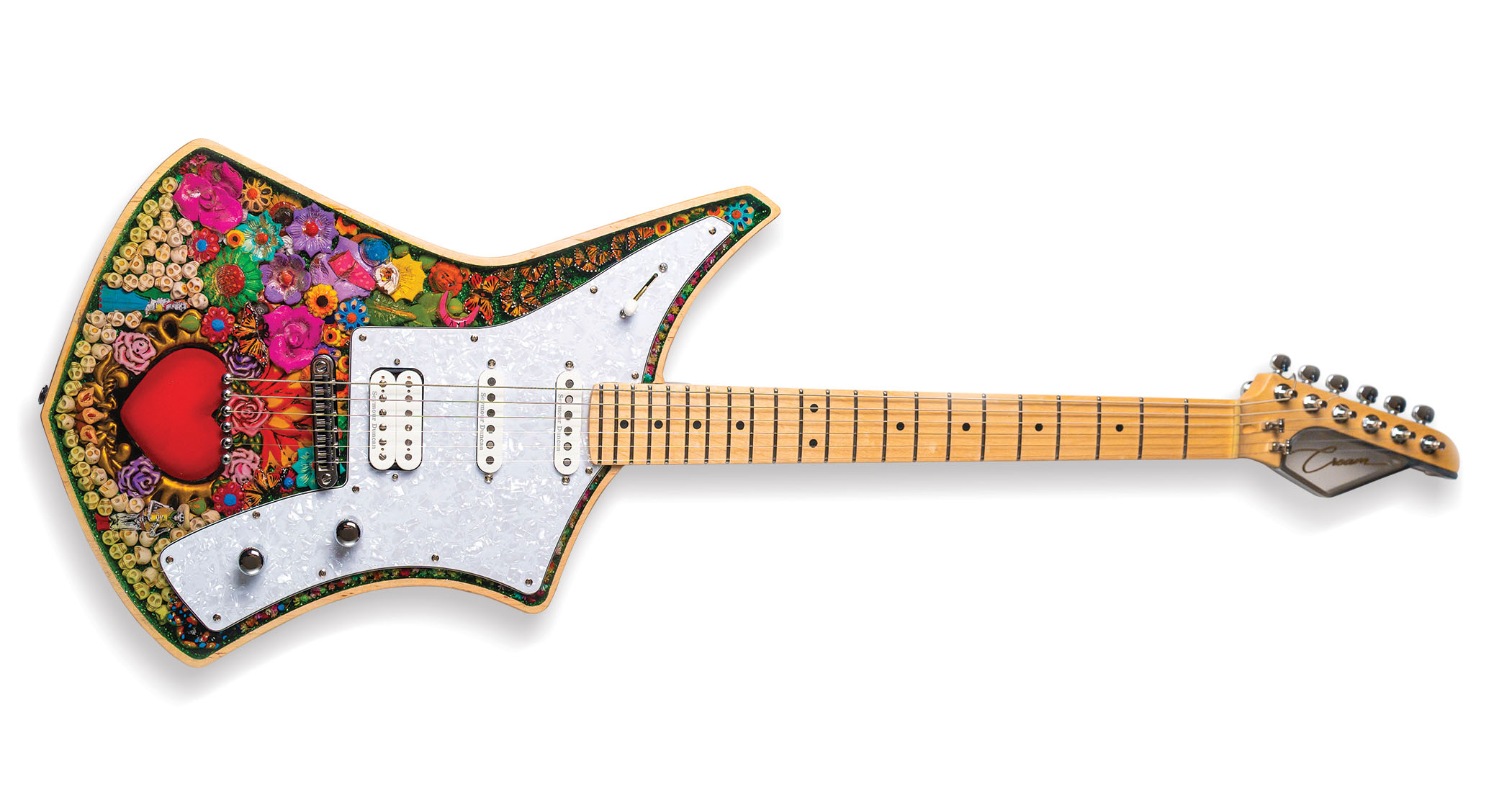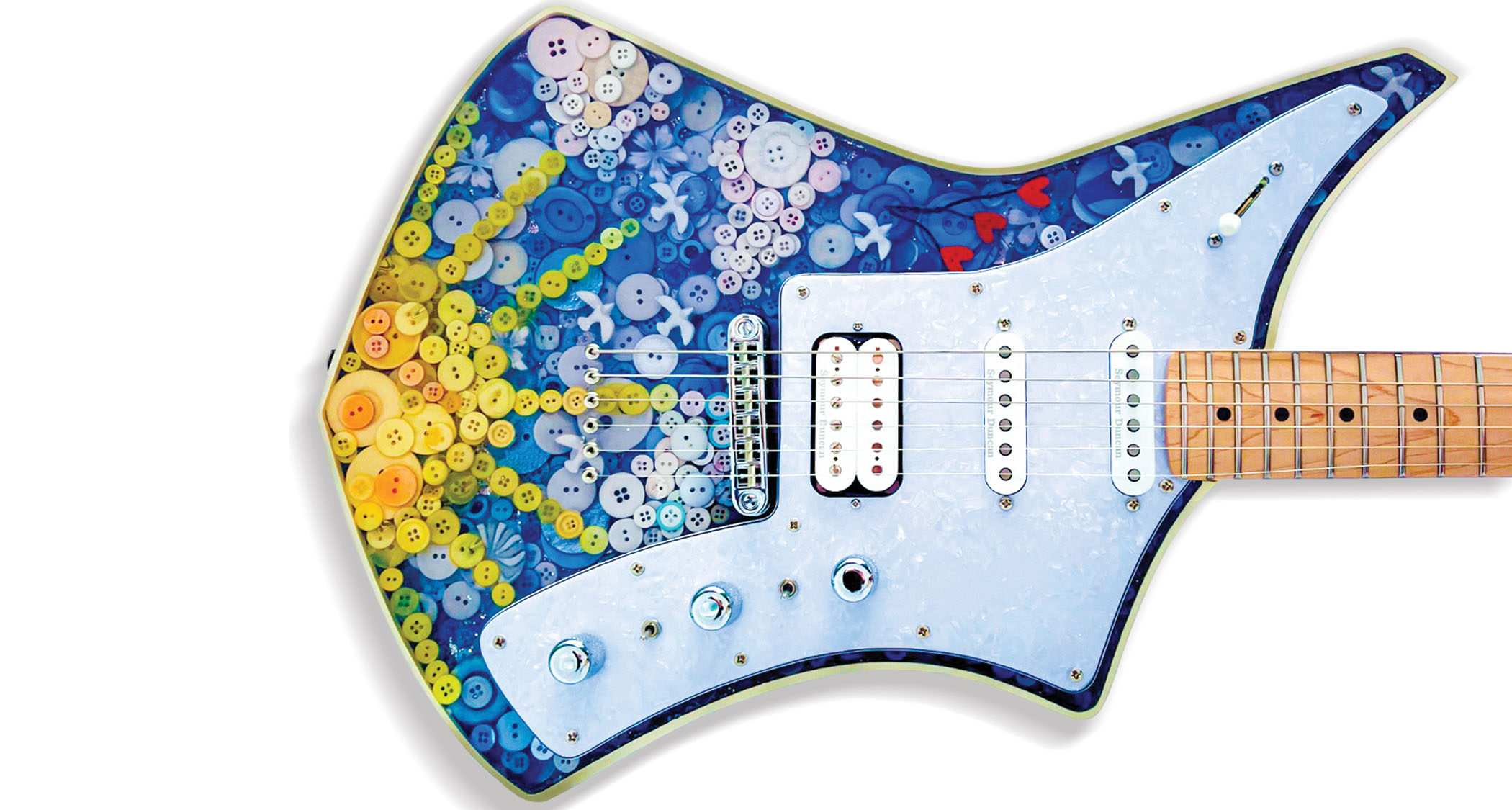“When Fender and Gibson embrace new tech, it’s usually not well received. It’s better to work with a young, disruptive company who wants to break the rules”: Inside Cream Guitars, the no-copy Mexican brand shaking up guitar with color-changing finishes
How a doctor (who also sidelined in designing suits for firefighters) ended up creating Cream Guitars, one of the most groundbreaking new brands in the industry

There were many exciting things being unveiled at this year’s NAMM Show, which felt like a return to form after the economic uncertainty of the last few years. But one booth that seemed to have everyone talking belonged to Cream Guitars – a relatively new company based in Monterrey, Mexico.
Along with its two eye-catching models, the Voltage and the Revolver, the company was showcasing its innovative color-changing prototypes. The concept behind this, as CEO Luis Ortiz said at the time, is to mirror the chameleon mentality of modern musicians, many of whom might feel like picking up an instrument that reflects their mood that particular day, rather than however they felt when the guitar was bought.
The game-changing technology will prevent diehards from having to buy the same model in different finishes, while also blowing the minds of whoever might be watching. Below, the Cream Guitars founder talks us through the company’s journey so far – and his plans for the future.
What led you to starting a guitar company in the middle of a pandemic?
“It’s a crazy story. I’m actually a doctor who studied medicine, and after leaving that world, I realized I can do a lot of things. At one point I started my next company making suits for firefighters. Then I got bored again, so I started another company for plastic injection molding before moving into textiles, then metal stamping.”

“I’m telling you this because I’m always trying to learn something new. Making products to save lives is inspiring – people depend on it. Guitars are kinda the same. They can save lives, just in a different way.”
Tell us about the very first guitar you made.
Get The Pick Newsletter
All the latest guitar news, interviews, lessons, reviews, deals and more, direct to your inbox!
“For my birthday I wanted a white Les Paul. My wife asked if it would really be that different to the other five I own, and I said, ‘Maybe it will sound more… white?!’ In the end, I decided to make one out of the tools in my factory. I had all the engineers to pull it off, so I showed them my designs and we started from there.
“Two were built, and then I saw that Coldplay were playing in Monterrey. I brought one along and gave it to [Coldplay guitarist] Jonny Buckland. He took it on tour and ended up telling me how unique it felt, so I decided to start a company and share these instruments with the world.”
When I play a Strat, it’s like there’s a path already made for me... Sometimes, in order to find myself, I need a carte blanche that doesn’t make me play like I would on other things
You have two designs, the Voltage and the Revolver. What did you set out to achieve with them?
“There were two paths in front of me. I could make a Strat tribute, including things Leo Fender never thought about, or I could make something completely original, which was going to be a lot harder. I knew people were going to laugh and tell me not to bother, but that’s the path I chose. Guitars are like an interface. You have all these ideas in your brain and then you move your fingers on the neck.
“When I play a Strat, it’s like there’s a path already made for me. They have this mojo, and I’ll be the happiest man in the world playing funk or Jimi Hendrix. If I grab a Les Paul, I only ever play like Slash. Sometimes, in order to find myself, I need a carte blanche that doesn’t make me play like I would on other things. I want the inspiration to come from a new place, to unleash a sound that doesn’t come with its own definitions and comparisons.”
There’s a video of you presenting Steve Vai some of your guitars, and it’s clear he was impressed by a number of things, starting with the flowery ornamentations on the bodies.
“They look like pressed flowers, but they’re actually more like brooches that my grandma would wear on her dresses. I remember she had this box that was like pirate treasure to me. So I came up with the idea of using them for finishes.
“The first finish we made had this beautiful AAA flame maple top, but when it was done, it just looked like any other guitar. That’s when I decided to come up with new ideas to stand out. When we started using resin, the possibilities went crazy. We could use those old flower brooches as well as buttons and other things to give our designs a completely unique vibe.”

Then there’s the long brass plates found at the back.
“It’s a 3mm plate going from the neck to where the strings come through the body, close to the bridge. After a lot of testing, we know those things vibrate. It’s a bit like a crash cymbal, you could even say we learned from the drummers! So I decided to enrich the harmonics using brass to create resonance and sustain.
“Every guitar has a recipe – it’s all about the ingredients. What you put in affects how it comes out. We use parts from Seymour Duncan, EMG, CTS, Switchcraft and Graph Tech because we know they work well.
“It’s like how Ferrari won’t make their own brakes and tires, they’ll just use the best ones they can find. We’re now working with Seymour Duncan on a signature set to capture the Cream sound.”

What are the challenges of being a new independent brand in 2024?
“Mainly it’s changes in the industry. We’ve noticed a lot of companies have moved towards selling direct and the stores that help us get our first guitars are not being supplied by them. Those stores we love are going to struggle because their suppliers are now competitors. So we grabbed our belts and decided not to sell direct. That’s a big part of our strategy.
Sometimes there’s resistance from the artists themselves, because the idea of change can be terrifying
“You can try the guitars and if you don’t like them, try something else. Sometimes there’s resistance from the artists themselves, because the idea of change can be terrifying. People might wonder why the Strat needs to be updated. And I agree, it’s a perfect instrument that doesn’t need changing. What we make is another color, another flavor, another formula to solve the equation of unlocking your mind.
“My designs might not be for everyone. If you love Strats, that’s fine – I love Fenders, Gibsons and PRS, too. But our guitars are another way of getting creative. Players often switch between Telecasters or Les Pauls, because that’s what our personalities are like. Our guitars are another way of showing the world how you feel. If they inspire you, my job is done. Our mission is to show people there are more possibilities.”

There aren’t many electric guitar brands operating out of Mexico. What else have you learned along the way?
“A lot! We went to our first NAMM to see what people thought of our guitars. We brought 20 with us and, honestly, they weren’t that well made. There were aesthetic things that we needed to address. Because if you build a factory in a city where there are no guitar factories, you need to train 20 people to make guitars. And to help them get there, you need to make a lot of mistakes, as many as they need to learn.
“I let my team build and rebuild to get to this point. When people became interested, they’d think we came from Italy or places like that. I’d say ‘No, we’re from Mexico: we like mariachi, tequila and tacos!’ That’s why I made the Mexican Folklore Collection, touching on our history. I wanted to show people we are proud to be Mexican. That collection got bought by Hard Rock Cafe to be shown in their Las Vegas hotel.”

You’re still finishing the prototypes for your color-changing guitar. Can you talk us through the science?
“There’s nothing like this out there. We partnered with a company that produces parts for the Kindle. It’s electronic ink with a switch to change through eight colors. It’s real paint – it’s not LED; there are no lights. Instead, there’s dust with an electromagnetic charge. When you hit the switch, the paints start to get excited and the color changes. In the future, you won’t have the problem of needing the same guitar in different finishes.
One of our sayings is ‘We don’t copy.’ In a world full of copies, be an original
“Why are we doing it? Because a lot of people laugh about it; somebody needs to do it! The CEO of the company helping us also plays guitar. He asked me why he should partner with us instead of bigger brands. My answer was we love Fender and Gibson because of what they did in the ’50s and ’60s. Their most valuable guitars are direct reissues from those years.
“When they embrace new technology, it’s usually not well received. It’s better to work with a young, disruptive company who wants to break the rules and make new ones. Younger generations are open to trying new things. Tomorrow’s artists are interested in the future.
“Next year we’re releasing two completely new shapes, one being a shredder guitar with modern technology and the other being our first acoustic. One of our sayings is ‘We don’t copy.’ In a world full of copies, be an original.”
- For more details, head over to Cream Guitars.
Amit has been writing for titles like Total Guitar, MusicRadar and Guitar World for over a decade and counts Richie Kotzen, Guthrie Govan and Jeff Beck among his primary influences as a guitar player. He's worked for magazines like Kerrang!, Metal Hammer, Classic Rock, Prog, Record Collector, Planet Rock, Rhythm and Bass Player, as well as newspapers like Metro and The Independent, interviewing everyone from Ozzy Osbourne and Lemmy to Slash and Jimmy Page, and once even traded solos with a member of Slayer on a track released internationally. As a session guitarist, he's played alongside members of Judas Priest and Uriah Heep in London ensemble Metalworks, as well as handled lead guitars for legends like Glen Matlock (Sex Pistols, The Faces) and Stu Hamm (Steve Vai, Joe Satriani, G3).
“These measures threaten the economic and cultural impact of U.S.-made musical instruments”: NAMM president responds to Trump's tariffs – urgently urging the administration to exempt the musical instrument market
Stevie Ray Vaughan, Simple Minds, Megadeth, the Cult and the class of 1985 – only in the new Guitar World












